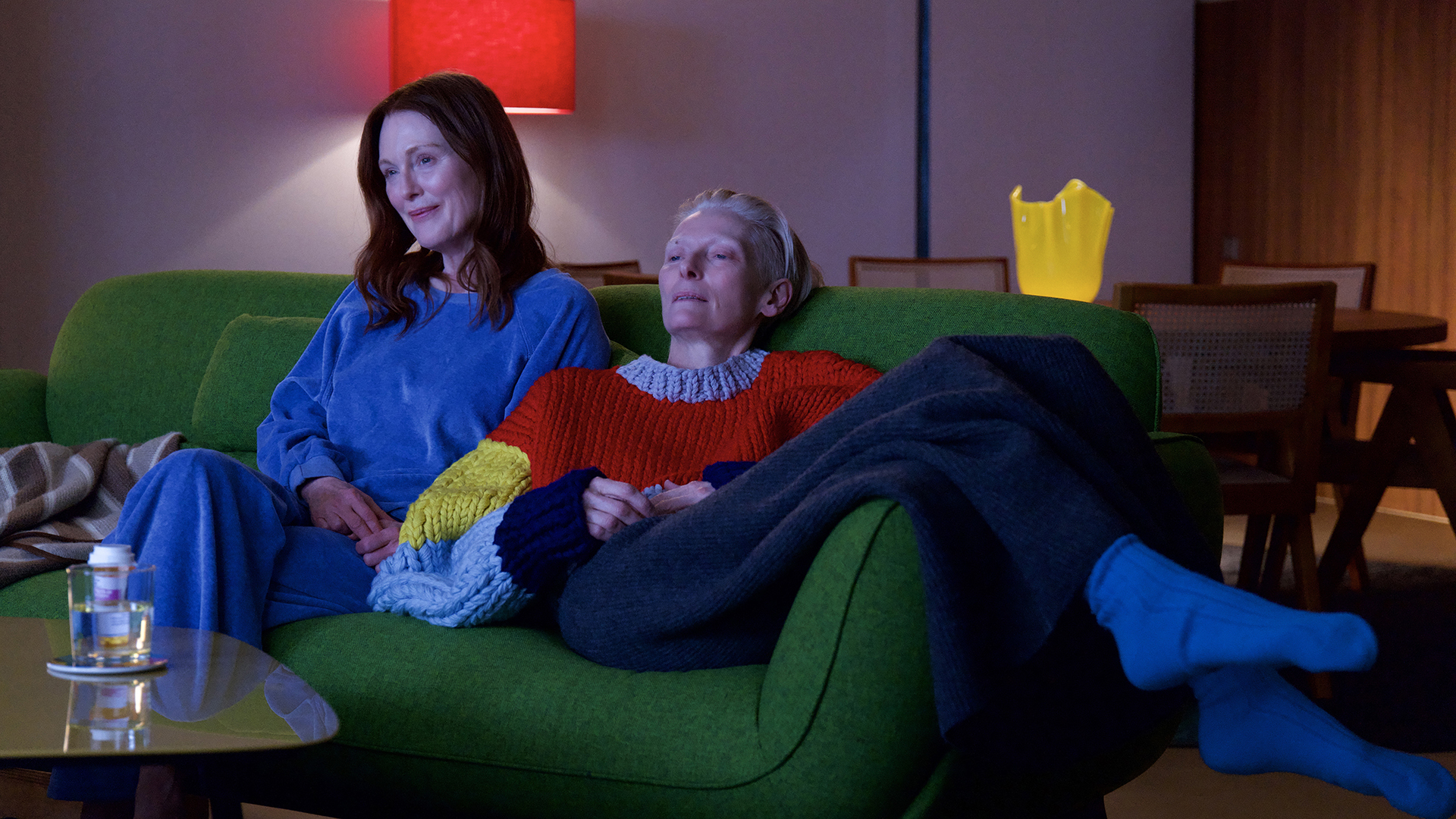To the death so feared herein is Almodóvar’s The Room Next Door, being so lifeless, unnatural, and much like dying, wasting with frightful predictability.

The Room Next Door concerns Martha (Tilda Swinton), a retired war reporter, undergoing experimental treatment for cancer that seems to be leading to an afflicting failure. From her close friend Ingrid (Julianne Moore), a novelist terrified of death, lately met after a long separation, she requests a favor, merely of staying in a room next door, so she would not be alone when she departs this world by illicit euthanasia.
Yet from this provocative premise promising novelty there follows but trite drama and dullness. Even the film’s quintessential conflict, of the dreadful last days whiled away by calm Martha and dismayed Ingrid, ignorant of the day to depart, of the day to find the friend’s corpse in the room next door, is constituted of trivial incidents, so banal and lacking imagination that seldom is anything presented or progressed further than what was presupposed by the premise. The drama is elevated little from forgettable banality. How much truer this is of the secondary themes explored, of parental neglect, war, and suicide, as well as its topical comments, all of which abound but in summary platitudes!

The dialogue, which alone could enrich such a dramatic film, is here its weakest aspect, being so stilted and artificial. It contributes much to the thematic shallowness for its not seeming at all organically arisen from natural conversation but instead rather from puppets reciting Almodóvar’s blunt attempts at thematic expression. Throughout, there is a rooted stiffness that the acting, with its exaggerated vigor, much worsens, and little sincerity, humanity, or emotion is conveyed that does not seem manifestly affected.
The dullness of effect can also be faulted to the weakly considered structure and pacing: the premise is introduced with joltingly embarrassing effect, but with bombastic grandeur, many plot threads promise heightened resolution. Yet after the pace measures back to normalcy and gently ends the narrative, they are forgotten, largely undeveloped, or worse, resolved with pitiful haste and conventionality.
The non-diegetic music, quite commonplace, often predictably employed in exaggerated dramatic fashion to pair with heightened emotion, contributes much to this counteracting bombast. Yet, occasionally, it is more interestingly used, jarring in otherwise innocuous scenes to novelly elicit dread. About equally commendable is the cinematography, which, though utterly unremarkable, employs admirably cinematic distance and stasis in the most significant moments.

And beauty is still found in those seldom moments when nuanced understanding and powerful images combine to express the soul of this lofty theme, of the beauty of this world, of the pain of being made to it insensitive, of losing one’s self, and of the inexplicable fragility of the renunciatory conviction that might turn at the memory of a single happy moment. Yet these moments form but the exception, being the stars amongst the dark skies of predictability, unnaturalness, and lifelessness wherein The Room Next Door is engulfed.
2.5/5 Stars
